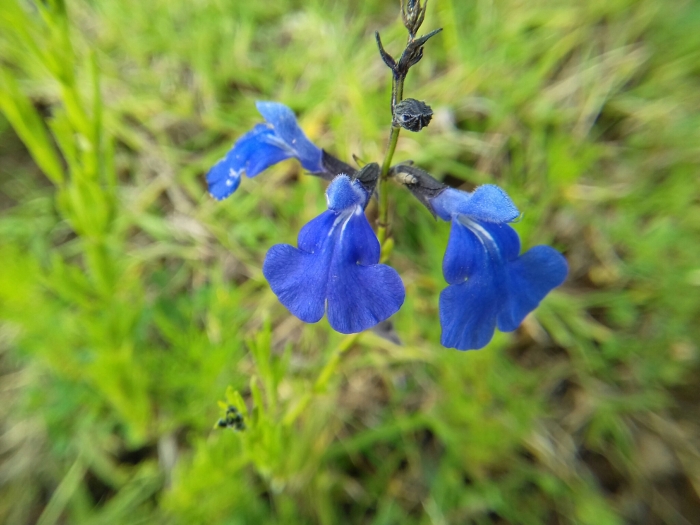West Texas Grass Sage
(Salvia reptans)
West Texas Grass Sage (Salvia reptans)
/
/

IA braham
CC BY 4.0
Image By:
IA braham
Recorded By:
Copyright:
CC BY 4.0
Copyright Notice:
Photo by: IA braham | License Type: CC BY 4.0 | License URL: http://creativecommons.org/licenses/by/4.0/ | Rights Holder: IA braham | Publisher: iNaturalist | Date Created: 2017-09-02T18:31:46-07:00 |












Estimated Native Range
Summary
Salvia reptans, commonly known as West Texas Grass Sage or Slenderleaf Sage, is a deciduous perennial herb native to the grasslands and open areas of the Chihuahuan Desert in West Texas and parts of Mexico. It typically grows to a height of 3 feet (0.9 meters) and a width of 2 feet (0.6 meters). The plant has a slender, upright form with narrow, linear leaves and produces wiry stems topped with vibrant blue flowers from late summer into fall, which are highly attractive to pollinators such as bees and hummingbirds.
West Texas Grass Sage is valued for its drought tolerance and the long-lasting, showy display of blue flowers that add a splash of color to the garden late in the season. It is used in xeriscaping, as a border plant, and in naturalistic plantings where its airy texture contrasts well with broader-leaved plants. This sage prefers full sun and can thrive in a range of soil types, provided they have good drainage. It is relatively low maintenance, requiring minimal supplemental watering once established. While generally disease-free, it can be susceptible to root rot if overwatered or planted in poorly drained soils. There are no significant pest issues, but care should be taken to avoid overwatering.CC BY-SA 4.0
West Texas Grass Sage is valued for its drought tolerance and the long-lasting, showy display of blue flowers that add a splash of color to the garden late in the season. It is used in xeriscaping, as a border plant, and in naturalistic plantings where its airy texture contrasts well with broader-leaved plants. This sage prefers full sun and can thrive in a range of soil types, provided they have good drainage. It is relatively low maintenance, requiring minimal supplemental watering once established. While generally disease-free, it can be susceptible to root rot if overwatered or planted in poorly drained soils. There are no significant pest issues, but care should be taken to avoid overwatering.CC BY-SA 4.0
Plant Description
- Plant Type: Herb
- Height: 3-4 feet
- Width: 1-1.5 feet
- Growth Rate: Moderate
- Flower Color: Blue
- Flowering Season: Summer, Fall
- Leaf Retention: Deciduous
Growth Requirements
- Sun: Full Sun
- Water: Medium
- Drainage: Medium, Fast
Common Uses
Bee Garden, Bird Garden, Butterfly Garden, Deer Resistant, Drought Tolerant, Fragrant, Groundcover, Hummingbird Garden, Low Maintenance, Rabbit Resistant, Rock Garden
Natural Habitat
Native to the grasslands and open areas of the Chihuahuan Desert in West Texas and parts of Mexico
Other Names
Common Names:
Scientific Names: , Salvia leptophylla, Salvia reptans, Salvia reptans var. reptans, Salvia angustifolia var. glabra, Salvia linifolia,
GBIF Accepted Name: Salvia reptans Jacq.